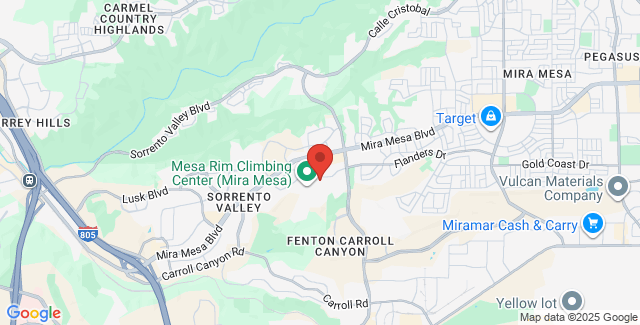History of the Juvenile Justice System
A grasp of the current conflict surrounding the responsibility and direction of the juvenile justice system becomes more obtainable when one takes into consideration how the system has progressed since its inception. The juvenile justice system was created in the late 1800s to reform U.S. policies regarding youth offenders. Since that time, a number of reforms - aimed at both protecting the "due process of law" rights of youth, and creating an aversion toward jail among the young - have made the juvenile justice system more comparable to the adult system, a shift from the United State's original intent.
Progressive Era Reforms
The Progressive Era in the United States was a time of extensive social reform. The period, which formally spanned between 1900 and 1918, was preceded by nearly a century of discontent. During the Progressive Era, Americans saw the growth of the women's suffrage movement, the campaign against child labor, the fight for the eight-hour workday, and the uses of journalism and cartooning to expose "big business" corruption.
Prior to the Progressive Era, child offenders over the age of seven were imprisoned with adults. Such had been the model historically. But the actions of political and social reformers, as well as the research of psychologists in the 18th and 19th centuries, began a shift in society's views on juvenile delinquents. Early reformers who were interested in rehabilitating rather than punishing children built the New York House of Refuge in 1824. The reformatory housed juveniles who earlier would have been placed in adult jails. Beginning in 1899, individual states took note of the problem of youth incarceration and began establishing similar youth reform homes.
Such early changes to the justice system were made under a newfound conviction that society had a responsibility to recover the lives of its young offenders before they became absorbed in the criminal activity they were taking part in. The juvenile justice system exercised its authority within a "parens patriae" (state as parent or guardian) role. The state assumed the responsibility of parenting the children until they began to exhibit positive changes, or became adults. Youth were no longer tried as adult offenders. Their cases were heard in a somewhat informal court designed for juveniles, often without the assistance of attorneys. Extenuating evidence, outside of the legal facts surrounding the crime or delinquent behavior, was taken into consideration by the judge. Early reform houses were, in many ways, similar to orphanages. Indeed, many of the youth housed in the reformatories were orphans and homeless children.
"In re Gault" - 1967
By the 1960s juvenile courts had jurisdiction over nearly all cases involving persons under the age of 18, and transfers into the adult criminal system were made only through a waiver of the juvenile court's authority. Juvenile courts aimed to make their 'civil proceedings' unlike adult 'criminal trials.' The civil proceedings, however, did not afford youths who were indeed facing a potential loss of liberty the due process of law rights explicated in the 5th and 14th Amendments. The right to trial by jury and the freedom against self-incrimination were guaranteed to citizens in 5th Article of the Bill of Rights (ratified 1791). This Article, the 5th Amendment to the Constitution, states that "No person shall be held to answer for a capital, or otherwise infamous crime, unless on a presentment or indictment of a Grand Jury…nor shall [a person] be compelled in any criminal case to be a witness against himself." The 14th Amendment required that all citizens of the United States receive equal protection under the law. The Amendment states, "No State shall make or enforce any law which shall abridge the privileges or immunities of citizens of the United States; nor shall any State deprive any person of life, liberty, or property, without due process of law; nor deny to any person within its jurisdiction the equal protection of the laws." The 14th Amendment was ratified in 1868.
A 1967 decision by the Supreme Court affirmed the necessity of requiring juvenile courts to respect the due process of law rights of juveniles during their proceedings. The ruling was the result of an evaluation of Arizona's decision to confine Gerald Francis Gault. Gault (age 15) had been placed in detention for making an obscene call to a neighbor while under probation. The Arizona juvenile court had decided to place him in the State Industrial School until he became an adult (age 21) or was "discharged by due process of law." The Supreme Court decision, delivered by Justice Abe Fortas, emphasized that youth had a right to receive fair treatment under the law and pointed out the following rights of minors:
- The right to receive notice of charges
- The right to obtain legal counsel
- The right to "confrontation and cross-examination"
- The "privilege against self-incrimination"
- The right to receive a "transcript of the proceedings," and
- The right to "appellate review"
The dissenting voice, Justice Potter Stewart, expressed concern that the court's decision would "convert a juvenile proceeding into a criminal prosecution." He held to the historical intent of the juvenile justice system, which was not to prosecute and punish young offenders, but to "correct a condition," and meet society's "responsibilities to the child."
The Juvenile Delinquency Prevention and Control Act - 1968
In 1968 Congress passed the Juvenile Delinquency Prevention and Control Act. The act was designed to encourage states to develop plans and programs that would work on a community level to discourage juvenile delinquency. The programs, once drafted and approved, would receive federal funding. The Juvenile Delinquency Prevention and Control Act was a precursor to the extensive Juvenile Justice and Delinquency Prevention Act that replaced it in 1974.
The Juvenile Justice and Delinquency Prevention Act - 1974
By 1974 the United States had developed a strong momentum toward preventing juvenile delinquency, deinstitutionalizing youth already in the system, and keeping juvenile offenders separate from adults offenders. The Juvenile Justice and Delinquency Prevention Act of 1974 created the following entities:
- The Office of Juvenile Justice and Delinquency Prevention (OJJDP)
- The Runaway Youth Program, and
- The National Institute for Juvenile Justice and Delinquency Prevention (NIJJDP)
In order to receive funds made available by the act, states were required to remove youth from "secure detention and correctional facilities," and separate juvenile delinquents from convicted adults. Part of the rationale behind the separation of juvenile and adult offenders was evidence that delinquent youth learned worse criminal behavior from older inmates. Such logic was voiced in the Progressive Era by the writer Morrison Swift, who commented on the practice of jailing young offenders with adults, "young and impressionable offenders were being carried off to Rutland with more hardened men, there to receive an education in lawlessness from their experienced associates." ("Humanizing the Prisons," August 1911, The Atlantic).
"Get Tough on Crime" Legislation
A steep rise in juvenile crime occurred between the late 1980s and mid-1990s. The increase in crime hit a peak in 1994 and then began to gradually decline. In response to a fear that juvenile crime would continue to rise at the rate seen between (roughly) 1987 and 1994, legislatures enacted measures designed to "get tough on crime." The 1974 Juvenile Justice and Delinquency Prevention Act was amended to include provisions that would allow states to try juveniles as adults for some violent crimes and weapons violations. Minimum detention standards were also put into place in some states. The anti-crime sentiment of the period caused changes to be implemented to the juvenile justice system that made it increasingly similar to the adult (criminal) justice system. The shift Justice Stewart had predicted in 1967, with the implementation of formal trials for youth, reflected an increasingly common view that juvenile offenders were not youth begging rehabilitation, but young criminals. Rehabilitation became a lesser priority to public safety in the aggressive campaign against crime of the 1990s.
In the late 1990s Americans faced growing concern over highly publicized and violent juvenile crime. A series of school shootings and other horrendous offenses caused the public to fear a new breed of "juvenile superpredators," defined by the OJJDP as "juveniles for whom violence was a way of life - new delinquents unlike youth of past generations." The OJJDP's February 2000 "Juvenile Justice Bulletin," acknowledged that the threat of juvenile violence and delinquency was grossly exaggerated in the 1990s; however, the fear experienced at the time resulted in significant changes to the United State's approach to juvenile crime.
Consult a Juvenile Defender in Your Area
If you are interested in learning more about the history of the juvenile justice system, contact a criminal lawyer.




